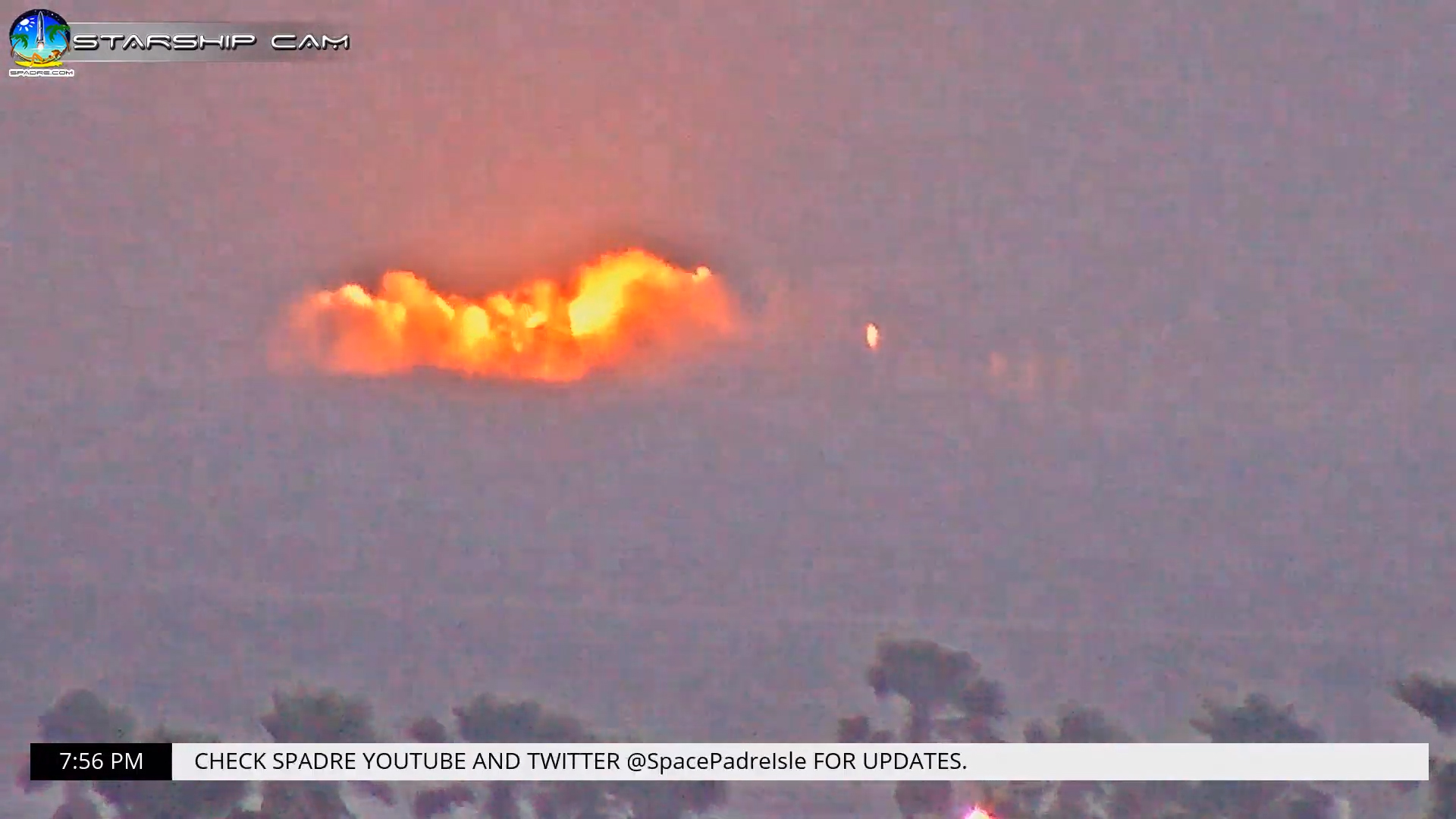SpaceX's 'Starhopper' Starship Prototype Just Aced Its 1st Hop, Elon Musk Says
It was a short, tethered flight.
SpaceX just fired up the "Starhopper" prototype for the company's planned Starship spacecraft for the first time, according to company CEO Elon Musk.
Musk confirmed the short rocket test firing at SpaceX's newest launch site in Boca Chica, Texas, near Brownsville in a Twitter post late Wednesday (April 3). (In that post, he confirmed the Starhopper nickname for the Starship prototype as well.)
"Starhopper completed tethered hop," Musk wrote in the update, which also included a video from Starship watcher @LabPadre. "All systems green."
Related: SpaceX Starship and Super Heavy Mars Rocket in Pictures
Starhopper completed tethered hop. All systems green. https://t.co/0m5Bm5slD2April 4, 2019
The test occurred at 8:56 p.m. EDT (0056 April 4 GMT) and lasted less than a minute, according to one of several video feeds watching the company's launch site. The video featured above was captured by Spadre.com, a website for the South Padre Surf Company on South Padre Island across from SpaceX's facility. The camera is about 6 miles (10 kilometers) from SpaceX's site.
While details of the Starhopper test are scarce, anticipation has been high in recent weeks as SpaceX outfitted the prototype with one of the company's new Raptor methane-liquid oxygen engines. The test likely used one engine (ultimately, Starhopper will have three) and didn't get very high, based on earlier comments by Musk. It was also tethered, or connected to ground equipment, for the duration of the test.
Breaking space news, the latest updates on rocket launches, skywatching events and more!
"First (really short) hops with one engine," Musk wrote on Twitter March 17. "Suborbital flights with three."
"First hops will lift off, but only barely," he added in another post.
Starhopper is a suborbital prototype designed to test the concepts and technologies SpaceX will need to build its new 100-person spacecraft, called Starship, and its massive booster, the Super Heavy. The prototype's name appears to be a mashup of Starship and Grasshopper, the latter being SpaceX's earlier hopping prototype that led to the company's reusable workhorse Falcon 9 rocket boosters.
The Starhopper prototype is made of stainless steel and has a diameter of about 30 feet (9 meters). SpaceX initially built the prototype with a nose cone, giving it a height of 128 feet (39 meters), but that cone was blown off by powerful winds. Musk has said the nose cone is not needed for the initial test hops.
Starship is the spacecraft SpaceX wants to use to colonize Mars, fly point-to-point trips around the Earth and perform a variety of other tasks. The company has already signed its first passenger, billionaire Japanese entrepreneur Yusaku Maezawa, who plans to fly with a group of artists around the moon — perhaps as early as 2023.
Related: See the Evolution of SpaceX's Rockets in Pictures
Editor's note: This story was updated to clarify that Starhopper currently has one Raptor engine for its first hop flights. Elon Musk has said the prototype will eventually use three engines for suborbital test flights.
- See the Evolution of SpaceX's Rockets in Pictures
- How SpaceX's 1st Passenger Flight Around the Moon Will Work
- SpaceX's Raptor Engine Hits Power Level for Starship Launches
Email Tariq Malik at tmalik@space.com or follow him @tariqjmalik. Follow us on Twitter @Spacedotcom and on Facebook.

Tariq is the award-winning Editor-in-Chief of Space.com and joined the team in 2001. He covers human spaceflight, as well as skywatching and entertainment. He became Space.com's Editor-in-Chief in 2019. Before joining Space.com, Tariq was a staff reporter for The Los Angeles Times covering education and city beats in La Habra, Fullerton and Huntington Beach. He's a recipient of the 2022 Harry Kolcum Award for excellence in space reporting and the 2025 Space Pioneer Award from the National Space Society. He is an Eagle Scout and Space Camp alum with journalism degrees from the USC and NYU. You can find Tariq at Space.com and as the co-host to the This Week In Space podcast on the TWiT network. To see his latest project, you can follow Tariq on Twitter @tariqjmalik.

